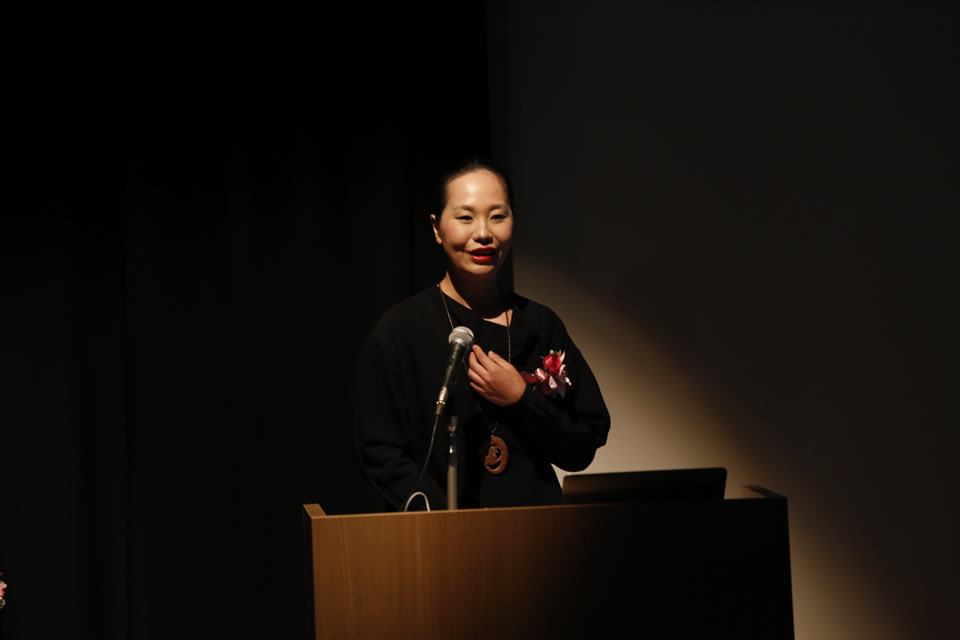PRESENTATION
I am a third-generation Korean resident in Japan. There are many around the world who are members of “diaspora” populations (people who live away from their original homelands or regions) like myself.
Every time problems relating to nationality or ethnic identity arise, questions like “Who am I?” and “Which country do I belong to?” occur to me. Perhaps because of this background, I came to sympathize with foreign ethnic groups and minority groups living in Japan, which led me to visit such communities from time to time. Through such ethnic groups, I experienced their traditions which sometimes even made me react physically in spite of myself to things I couldn’t understand. On such occasions, I found complex feelings – somehow nostalgic and happy – streaming into me.
I intuitively realized these must be very important experiences. So, I began to collect inside of me things that I found important – things like sounds, colors, songs and clothes. In due course, these seemingly separate things that I saw, heard or felt became linked increasingly with each other and emerged in myself as images of a narrative nature. I expressed these images in the photographs that are the works I submitted to this contest.
We humans tend to divide or discriminate between people by nationality and ethnicity. These “invisible boundaries” brewed unconsciously by society at large or in the course of historical developments can surface in our daily life when least expected. I was not comfortable with meeting such negative boundaries but, at the same time, it was undeniable that I also had elements of such boundaries deep within myself.
Stories, I believe, have a strong power to destroy our stereotypical views. My works contain ethnic motifs. This is perhaps because I put in my works my desire to destroy views of people who tend to consider nationalities and ethnic groups as something like mere symbols.
In the years ahead, we will see the world become more and more complex, where races, genders, values and the like are mixed up and intertwine with each other more than ever. By looking at a variety of photos, I would like to increasingly relate myself with things that have linked me to the world.
At present, I have no idea about where this “STORY” is going to end or what it will tell you. Yet, for now, I would like to continue to photograph what comes up in myself.


Selector’s Comment & Questions and Answers
Osamu James Nakagawa
The moment I looked at your work, I didn’t know how to figure out all of these symbols. Belonging to a diaspora from the United States and Japan myself, I could feel from your work your desire to express – in an ambiguous way – yourself, someone who is lurching in the fluid-like middle zone. Your work also made me think about your struggle to figure out the symbols that defy solution, the narrative aspect you intended to develop, and what your intended story is about.
Just as I anticipated, the images prevailing in your visuals – elements of Korean and Japanese cultures – appeared very problematic. Smartly, softly and in your own words, you presented your points that would otherwise be countered by others once spoken aloud. Your photographs seem to represent a uniquely subtle way of communication whereby the works make those who look at them think about something important and yet are taken aback by odd feelings after going out of doors.
Your work includes portraits, still lives and even animals. How did you choose the motifs?
(Kim)
Oral traditions and old tales that I heard from people whom I’ve met have become familiar stories to me – the fox is considered to be a deity, for example. I simply turn these things into visuals. I do research only after the images have been completed. As I checked them out, I occasionally found some were related to other legends. Those who look at my work may develop their own associations and interpretations. I leave it up to them.